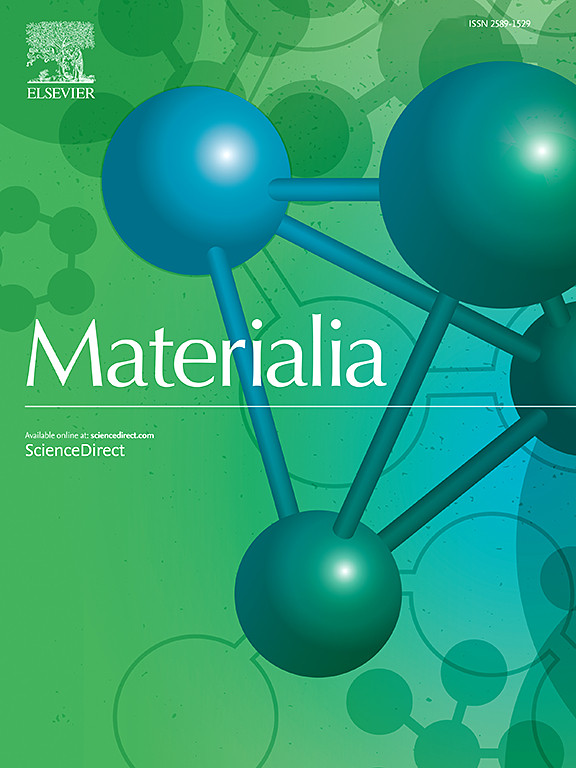Effect of transformation temperature on the microstructure of an ASTM A335 grade P91 steel isothermally transformed to ferrite
IF 3
Q2 MATERIALS SCIENCE, MULTIDISCIPLINARY
引用次数: 0
Abstract
In this contribution the isothermal austenite-ferrite transformation in an ASTM A335 P91 (9Cr1MoVNb) steel was studied regarding the ferrite microstructure obtained after full transformation. First, using the information obtained from dilatometry experiments, the Temperature-Time-Transformation diagram was established for selected experimental conditions. The ferrite average grain size, the ferrite grain size distribution and the precipitated second phases nucleated and grown in the ferritic matrix during transformation were examined as a function of the transformation temperature in the range from 640 °C to 760 °C. For the size distribution of ferritic grains, a study was carried out using the kernel density estimation methodology. As transformation temperature increased, the average grain size showed an increasing tendency, and the ferrite grain size distribution broadened. M23C6, M2X and MX precipitated phases were identified in fully transformed samples, but differences in morphology, size and nucleation site of these precipitates were found according to the transformation temperature, i.e. below or above the “nose” of the TTT diagram. The presence of fiber morphology of the precipitates only at low and intermediate temperatures was associated to the grain-boundary nucleation of ferrite.

相变温度对ASTM A335级P91钢等温转变为铁素体组织的影响
本文研究了ASTM A335 P91 (9Cr1MoVNb)钢完全转变后获得的铁素体组织的等温奥氏体-铁素体相变。首先,利用膨胀实验获得的信息,在选定的实验条件下建立温度-时间变换图。研究了在640 ~ 760℃相变温度范围内,铁素体平均晶粒尺寸、铁素体晶粒尺寸分布和在铁素体基体中形核长大的析出第二相的变化规律。对于铁素体晶粒的尺寸分布,采用核密度估计方法进行了研究。随着相变温度的升高,平均晶粒尺寸呈增大趋势,铁素体晶粒尺寸分布变宽。在完全转变的样品中发现了M23C6、M2X和MX析出相,但根据转变温度,即TTT图“鼻子”的下方或上方,发现了这些析出相的形态、大小和成核位置的差异。在低温和中温析出相中纤维形态的存在与铁素体晶界形核有关。
本文章由计算机程序翻译,如有差异,请以英文原文为准。
求助全文
约1分钟内获得全文
求助全文
来源期刊

Materialia
MATERIALS SCIENCE, MULTIDISCIPLINARY-
CiteScore
6.40
自引率
2.90%
发文量
345
审稿时长
36 days
期刊介绍:
Materialia is a multidisciplinary journal of materials science and engineering that publishes original peer-reviewed research articles. Articles in Materialia advance the understanding of the relationship between processing, structure, property, and function of materials.
Materialia publishes full-length research articles, review articles, and letters (short communications). In addition to receiving direct submissions, Materialia also accepts transfers from Acta Materialia, Inc. partner journals. Materialia offers authors the choice to publish on an open access model (with author fee), or on a subscription model (with no author fee).
 求助内容:
求助内容: 应助结果提醒方式:
应助结果提醒方式:


